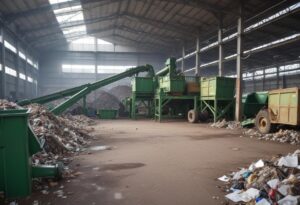Lithium is a highly reactive and flammable alkali metal that is commonly used in batteries, ceramics, and other industrial applications. Its unique properties, including its low atomic weight, high electrochemical potential, and high specific heat capacity, make it an ideal material for many applications. In this article, we will explore the qualities of lithium, countries with substantial proven reserves, and alternatives that are being researched to be used in place of lithium.
Qualities of Lithium
Lithium has a number of qualities that make it highly desirable for use in various industries. For starters, it is a highly reactive metal that easily forms compounds with other elements. Lithium is also highly ductile and can be drawn into thin wires or flattened into thin sheets without breaking. It is also lightweight, making it ideal for use in portable devices and equipment.
Another key quality of lithium is its high electrochemical potential. This makes it an ideal material for use in batteries, as it can store and release energy quickly and efficiently. Lithium-ion batteries, for example, are commonly used in electronic devices, electric vehicles, and renewable energy systems.
Countries with Substantial Proven Reserves
The majority of the world’s lithium reserves are located in South America, specifically in the Andean region of Chile, Bolivia, and Argentina. Chile is the world’s largest producer of lithium, accounting for over 50% of global production. Argentina and Bolivia are also major producers, with Bolivia believed to have the largest reserves in the world.
Australia is the second-largest producer of lithium, with significant reserves located in Western Australia. Other countries with significant reserves include China, Canada, and the United States.
Alternatives to Lithium
Despite its many qualities, lithium is not without its downsides. For one, it is a finite resource, and as demand for lithium-ion batteries and other applications increases, concerns about future availability have arisen. Additionally, the mining and processing of lithium can be environmentally damaging, particularly in countries with lax environmental regulations.
As a result, researchers have been exploring alternatives to lithium that may be more sustainable and environmentally friendly. Some of the most promising alternatives include:
- Sodium-ion batteries: Sodium is more abundant and less expensive than lithium, making it a more sustainable option for battery production. Sodium-ion batteries also have a higher energy density than lithium-ion batteries, which means they can store more energy in a smaller space.
- Zinc-air batteries: Zinc is also more abundant and less expensive than lithium, and zinc-air batteries can store more energy than lithium-ion batteries. However, they are currently less efficient than lithium-ion batteries and have a shorter lifespan.
- Solid-state batteries: Solid-state batteries use solid electrolytes instead of liquid ones, which makes them safer and more stable than lithium-ion batteries. They also have a higher energy density, which means they can store more energy in a smaller space. However, they are still in the development stage and have not yet been commercialized.
- Hydrogen fuel cells: Hydrogen fuel cells convert hydrogen and oxygen into electricity, emitting only water vapor as a byproduct. They are highly efficient and can be used in a wide range of applications, from transportation to stationary power generation. However, the production and storage of hydrogen can be expensive and challenging.
Conclusion
Lithium is a highly versatile and valuable material, but concerns about its availability and environmental impact have led researchers to explore alternative options. Sodium-ion batteries, zinc-air batteries, solid-state batteries, and hydrogen fuel cells are all promising alternatives that could potentially replace lithium in certain applications. As technology continues to evolve, it is likely that new and even more innovative solutions will emerge. Ultimately, the goal is to find materials and technologies that are sustainable, efficient, and environmentally friendly, so that we can continue to meet our energy needs



